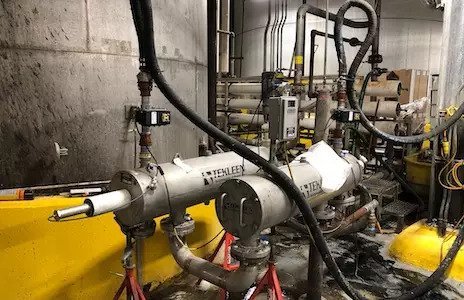Filtration Tips for Drip Systems
Drip irrigation systems take the worry out of watering -- unless emitters become clogged with dirt or other contaminants from the water source. Then watering becomes a labor-intensive process requiring constant monitoring and frequent cleaning. This can often cancel out the labor and money you’re trying to save with a drip system.
Water quality is a key factor in the success of drip, or microirrigation systems. Water purity can be affected by many factors -- seasonal changes, pipeline conditions, flow velocity, rate of pond turnover, and changing water sources.
How can you assure adequate water quality to keep your drip system functioning at an optimal level? Start by choosing the right filtration for your particular conditions. To a degree, filtration is as much art as science.
But there are several quantifiable parameters to help you determine the right size filter for your needs. These include:
Minimum and Maximum operating flow. This is the most critical factor when sizing a filter. Do not confuse flow rate with line size, as they often are not compatible. For example, a 2-inch filer that accommodates a 100 gallon per minute flow rate will not work for a 2-inch system with a 150 gpm flow rate. In this case, you would need to go to the next larger size, such as a 3-inch filter.
Water source. This determines what kind of debris you are trying to trap. Generally speaking, well water contains inorganic debris, such as sand, while pond or surface water contains largely organic matter, such as algae and leaves. Inorganic matter requires a smaller screen to trap the sand and sediment that would pass through a larger screen.
Minimum and maximum operating pressure. Accurate pressure readings are important for two reasons. One, each filter type has a maximum rated pressure of operation. Two, if your system calls for an automatic, self-cleaning filter, minimum operating pressure must be maintained when the filter’s flushing mechanism is engaged.
Size of downstream orifice to be protected. Generally speaking, a filter is necessary to keep debris from clogging downstream sprinklers or emitters. Emitter orifice size will determine the pore, or micron, size of your filter element. As a rule of thumb, the proper filter prosity should maintain a ratio of 1:5 for drip irrigation and 1:3 for sprinklers. More specifically, drip systems require 80-100 microns (200- 150 mesh) filtra-tion; micro sprinklers or jets require 150-200 microns (100- 80 mesh); impact sprinklers and rotors require 200-400 microns (40-80 mesh).
Budget. This parameter is complex. Take into account not only the inital cost of a filter but also the cost of maintaining a system without filtration. Automatic, self-cleaning fil-ters are more expensive than manual filters, but when labor costs are factored in, they may be less expensive in the long run.
A real time-saver
Will Harling is co-owner of Salmon View Farm in Somes Bar, Calif. This vineyard has a drip sys-tem with 2,000 emitters and his needs are much the same as those of a nursery grower.
“Our vineyard is in a steep, mountainous environment and draws from water sources that aren’t clean,” Harling said. “When we had simple screen filters, we had to clean them manually five or six times during a watering, which we did every couple of days.” Harling said that if his com-pany forgot to flush or got busy doing other things, the pressure would force the particles through the mesh and send them out to the emitters and cause clogging.
“Checking 2,000 emitters was a real drain on our resources,” he said.
Filtration is a must with drip systems, said Gideon Brunn, president of Automatic Filters, Inc. in Los Angeles.
His company’s Tekleen fitlers automatically backwash particles from screens when water pressure reaches preset levels. This process uses about 2 gallons of water.
For more: Automatic Filters, LLC, 2672 S. La Cienega Blvd., Los Angeles, CA 90034; (310) 839-2828; fax (310) 839-6878; info@tekleen.com; www.tekleen.com. Elaine Floyd is a free-lance writer in Bellingham, Wash.


